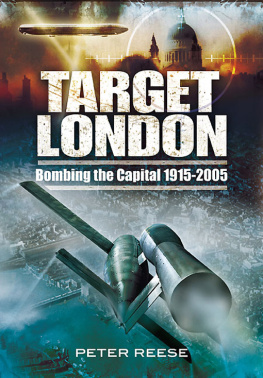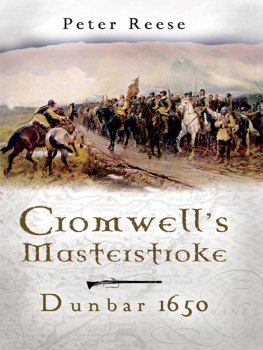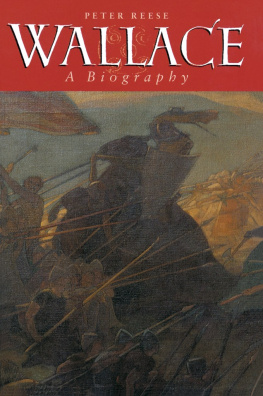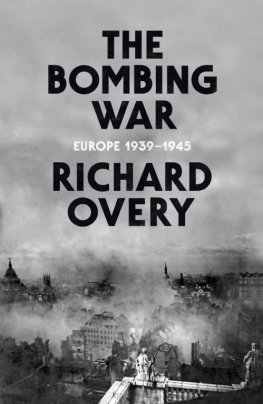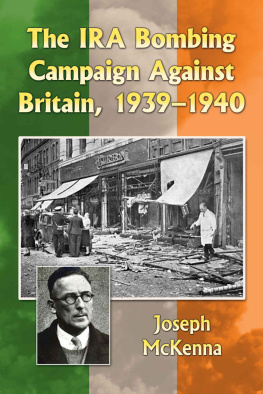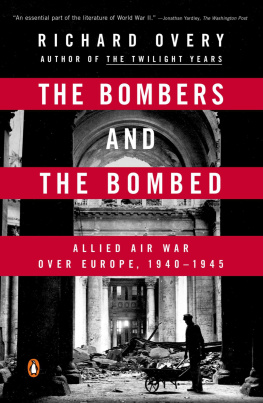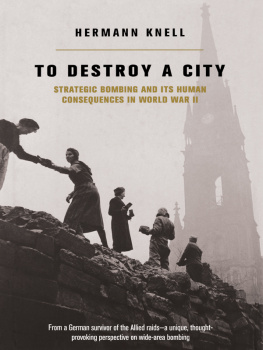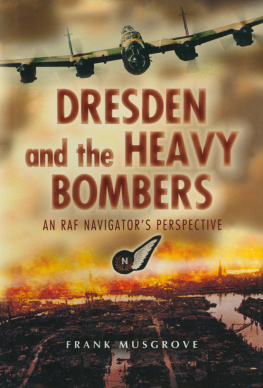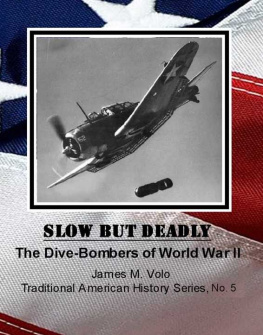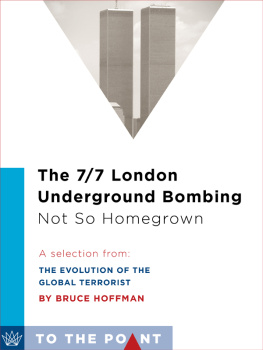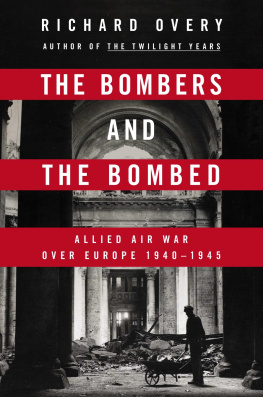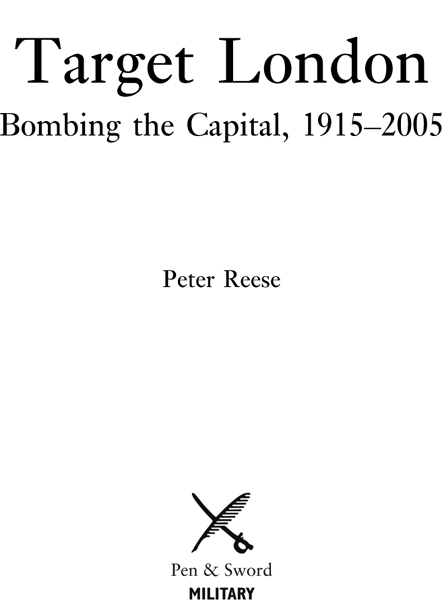To the citizens of London, past and present
First published in Great Britain in 2011 by
Pen & Sword Military
an imprint of
Pen & Sword Books Ltd
47 Church Street
Barnsley
South Yorkshire
S70 2AS
Copyright Peter Reese 2011
ISBN 978-1-84884-122-2
The right of Peter Reese to be identified as Author of this Work has been asserted by him in accordance with the Copyright, Designs and Patents Act 1988.
A CIP catalogue record for this book is available from the British Library.
All rights reserved. No part of this book may be reproduced or transmitted in any form or by any means, electronic or mechanical, including photocopying, recording or by any information storage and retrieval system, without permission from the Publisher in writing.
Typeset in 11/13 Ehrhardt by Concept, Huddersfield, West Yorkshire Printed and bound in England by CPI UK
Pen & Sword Books Ltd incorporates the Imprints of Pen & Sword Aviation, Pen & Sword Maritime, Pen & Sword Military, Wharncliffe Local History, Pen & Sword Select, Pen & Sword Military Classics, Leo Cooper, Remember When, Seaforth Publishing and Frontline Publishing.
For a complete list of Pen & Sword titles please contact
PEN & SWORD BOOKS LIMITED
47 Church Street, Barnsley, South Yorkshire, S70 2AS, England
E-mail:
Website: www.pen-and-sword.co.uk
Contents
Preface and Acknowledgements
In this book I set out to describe the full range of attacks made on London during the twentieth century, throughout the two world wars and latterly by terrorists.
The men and women who witnessed the first Zeppelin attacks have all but passed away and those who were in London during the Second World War are rapidly diminishing in number. I count myself as one of them, although I was an evacuee during the Blitz before living as a boy in North London during 19435 in a house bearing the scars of the earlier bombing. Like others at that time I watched V1s flying overhead and waited fearfully for the rough pulses of their engines to cut out before they tumbled to earth. Although personally unscathed, like others I had a close friend whose home was reduced to a pile of smouldering rubble by a V2. While memories of so long ago may not be fully reliable, my strongest impression of that time was that nothing was allowed to prevent the lives of schoolboys (and other citizens) from following their regular course, which in my case included the regular physical chastisement which, with the young masters away, was delivered by others of advancing years. For me and hopefully for most readers of this book with no direct experience of them the number and scale of the attacks upon London during the last century is astounding and the stories about the individuals concerned illimitable.
* * *
With regard to my research, I have mined a wealth of correspondence about the raids in the Library of the Imperial War Museum and the Mass Observation Archive at the University of Sussex. Other institutions used have included the Prince Consort's Library, Aldershot, The Army Central Library, London's Guildhall Library, The London Metropolitan Archives, The Library of the Royal Aeronautical Society, The National Army Museum and Farnborough Air Sciences Trust. As in the past, much of the writing has taken place in the Prince Consort's Library where Chief Librarian Tim Ward and his amazing staff are a writer's dream.
The book would never have been completed without the support of commissioning editor Rupert Harding and all at Pen & Sword. As for my own support system, Mrs Christine Batten and her computer have again transformed old-style writing into working form.
For personal assistance I would like to thank Mrs Jennifer Prophet for her arduous and vital work in scrutinising the book's first draft, and both her and her son Charles for shouldering the detailed task of compiling the index; my friend Paul Vickers, author, historian and head of the Army Libraries Information Systems, for his production of excellent maps and illustrations and much more besides; Colonel Mike Wellings for discussing at length the book's early tentative form; Colonel Tony Guinan TD for suggesting additional sources, in this case with the ack-ack services; and Mike Cawley who, with distinguished airman Bob Pugh, generously loaned me books from their personal collections.
Finally, above all I would like to thank my wife, Barbara, who over many years has coped with an absent husband at his library desks. This time she has acted as a sounding board for the book's early drafts where her good sense and practicality have, as before, proved invaluable.
Any mistakes are, of course, mine alone.
Peter Reese
Aldershot
September 2010
Prologue
The bombardment of London began during the night of 31 May 1915 with the arrival over the north-east of the city of German army Zeppelin L38, commanded by Hauptmann Erich Linnarz. The airship moved high over the industrial East End before passing across West Ham and Leytonstone. During the course of its flight it released over 2,500lb of bombs, including eighty-nine incendiaries and thirty grenades. These killed seven people and injured thirty-five. The dubious honour of being the first London house to be bombed went to 16 Alkham Road on the outskirts of Hackney where the owner, Albert Henry Lovell, together with his wife, their children and two women visitors, escaped unscathed from the blazing upper rooms.
Unlike the supremacy enjoyed by the British Royal Navy over other naval forces, London's air defences were as yet inadequate, a fact that astonished and enraged its citizens. A warning was received as the airship crossed the coast where the ack-ack response had been limited to machine guns. These opened up during both the Zeppelin's approach and return journeys to London but they failed to damage it. At the time London's ground defences were just twelve genuine anti-aircraft guns and the same number of searchlights. A total of nine aircraft were despatched to meet it but they too failed to locate the massive craft. This was not surprising. One was a very slow FE2a two-seater with a pusher rear engine, whose observer, sitting in his open cockpit in the aircraft's nose, was armed with no more than a rifle and incendiary bullets. This plane failed to reach the 1,500m height required to get anywhere near the Zeppelin and it subsequently crashed on landing, killing the pilot. Another defending aircraft was a Short S81 two-seater seaplane, which was so under-powered that it could not carry an observer and whose armament consisted of a rifle and two grenades resting on its pilot's lap. After failing to make contact, this also crashed on landing, although the pilot survived. Another aircraft involved was an obsolete pre-1914 Deperdussin whose pilot was similarly equipped with a rifle and grenades. This also failed to make contact, although it landed safely.
While the damage inflicted during the initial raid was minor it marked the end of a period lasting almost 900 years when, following its capture by the Danish King Cnut in 1014 and then by William the Conqueror in 1066, London had been spared from external attack. From its time as a Roman city with an 18ft-high perimeter wall stretching for 2 miles and a single bridge crossing the Thames at a point opposite its forum and basilica, significant changes had already taken place which would continue and accelerate following William's accession. This was fully predictable because, positioned as it was close to the lowest bridging point over the River Thames where routes from the south, west and north of the country converged, and with the river's estuary facing the great waterway of the Rhine leading into the heart of Europe, London was virtually guaranteed commercial success.
Next page
